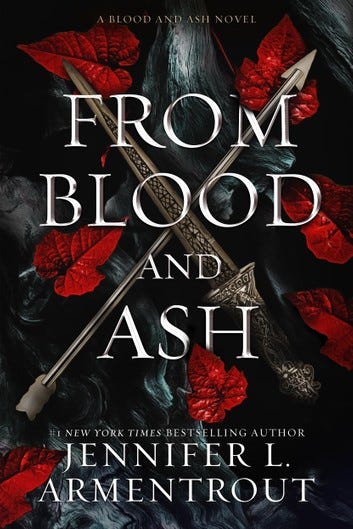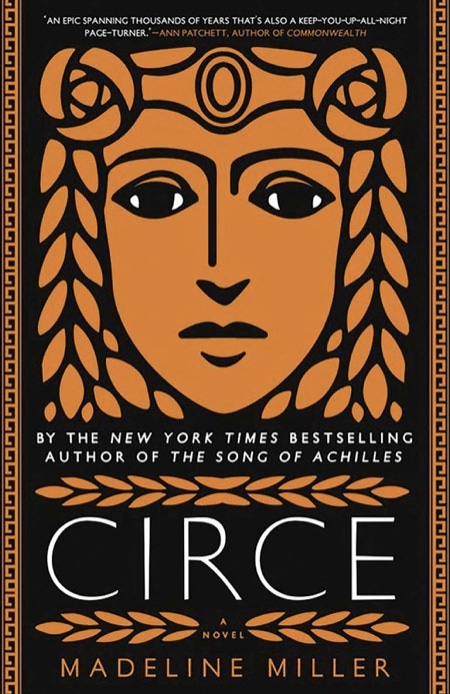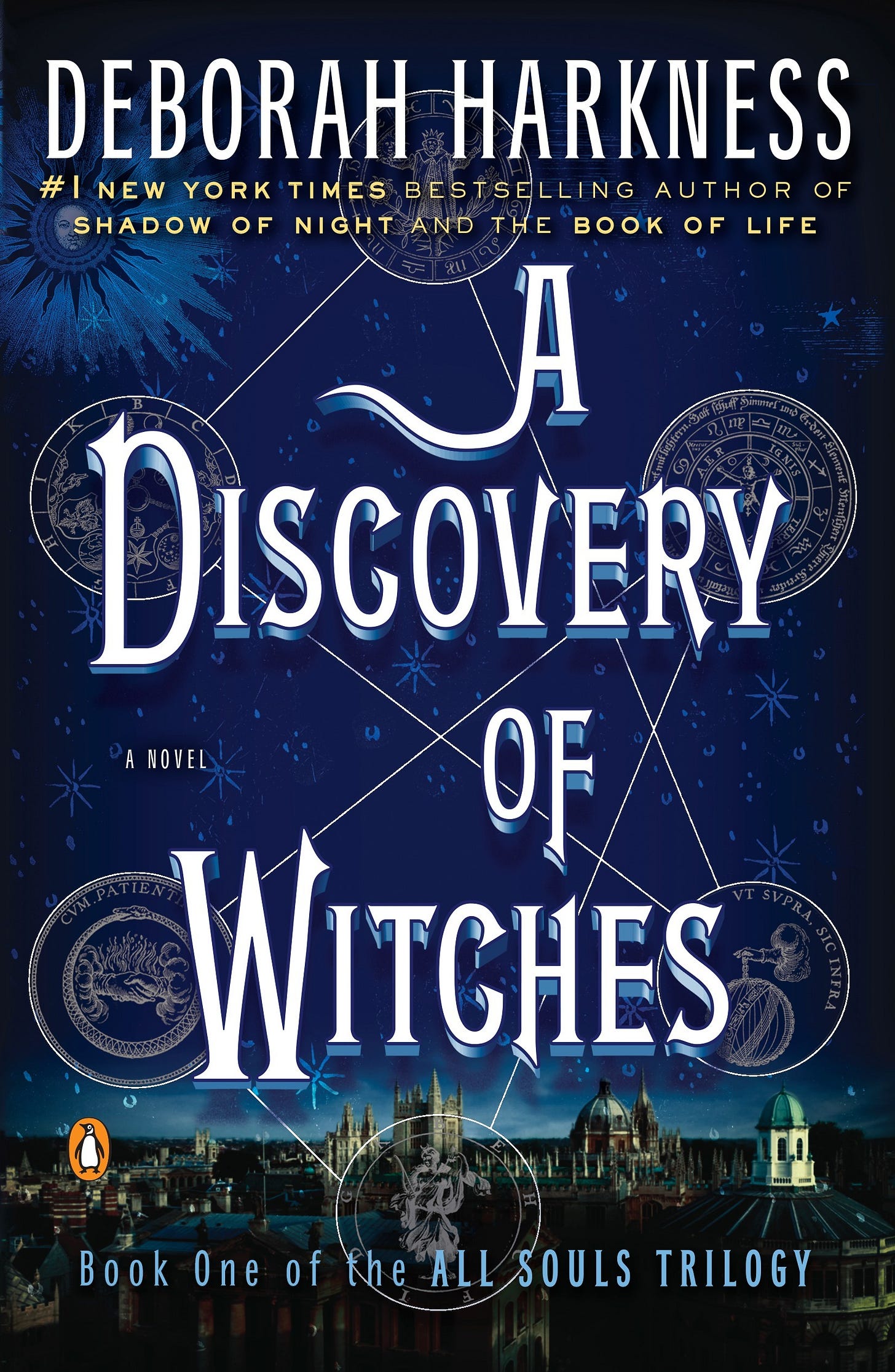Four Types of Romantasy Worlds
Working Title: Epic worldbuilding is the result of combining imagination and research.

Romantasy Realms subscribers! You will be the first to learn of an exciting opportunity to help you get your romantasy novel published. Check your inbox next Monday, September 9, 2024 for more details!
While many romantasy readers often point to the relationship dynamic between the main characters as their favorite aspect of this genre, a quick perusal of the must-read romantasies share a second, equally important element:
They all contain immersive, detailed, well-researched worldbuilding.
Think about it for a moment. Feyre’s love story in ACOTAR is an exciting, spicy rollercoaster with dark realizations as well as moments of passion. However, that same story would not hit the reader in the feels in quite the same way if it were set in the boroughs of New York City rather than the mythical, season-inspired courts of Prythian. The same can be said for Violet and Xaden in Fourth Wing. There are college romances, and then there are war colleges where the biggest, baddest weapon is a freaking dragon. As you can see, the setting is a huge part of the appeal.
If you haven’t done any preliminary research into your worldbuilding and you’re already writing, that’s ok! This is your sign from the universe to get started. If you’re still in the drafting process and aren’t sure about what type of setting you’d like to utilize, the following information will point out the pros and cons of each type of fantasy setting. Knowing this information will get you on your way to writing a romantasy title that has readers clambering for more.
1. Primary World Fantasy
Primary world fantasy takes place here on planet earth, usually in contemporary times (within twenty-five years of the publication date). The fantasy elements can vary widely, from the existence of mythical creatures to entire magical societies hiding in plain sight, as seen in the Harry Potter series.
A major pro of writing a primary world romantasy is that it requires the least amount of research. Unless you are setting your story someplace you have never visited, you already know the geography, climate, and culture. Odds are your readers will as well, which lessens the learning curve for them to enter the story.
One major disadvantage of writing a primary world within romantasy is that if you rely too heavily on the real world, you may be veering into paranormal romance territory. (See my review of Bride for a deeper discussion on this topic). While there is absolutely nothing wrong with writing paranormal, be aware that romantasy readers are going to expect more than the minimum when it comes to worldbuilding. For example, Harry Potter, while not romantasy, is technically set in the primary world of the 1990s UK. London features heavily, along with telephones, cars, and TV. Yet the world Rowling created alongside the real world is hyper-detailed and immersive enough to provide inspiration for an entire theme park!
Some of my favorite primary world romantasy books include Bewitched by Laura Thalassa, The Fall that Saved Us by Tamara Jeree, and Payback’s A Witch by Lana Harper.
2. Secondary World Fantasy
Secondary world fantasy, sometimes called epic or high fantasy, takes place in a unique world or universe that the author has crafted. They can range from anything that feels like Medieval Europe or Imperial China to something so fantastic it borders on the realms of science fiction. The most popular romantasy books fall into this category.
The biggest advantage of writing a secondary world romantasy is that the sky is the limit. You want an army of dragons? No problem. You want interspecies romance and have it considered acceptable? That sounds pretty hot. Real-world physics got you down? Worry not, flying, magical transport, and shape-shifting creatures are par-for-the course.
With freedom, however, comes responsibility. Readers do not like lazy worldbuilding, and may complain if they feel your book’s world and magic is too similar to the classics in the fantasy genre. A major complaint surrounding Robert Jordan’s Wheel of Time series is that it is too similar to Tolkien. Literary agent Laura Crocket noted in Publisher’s Weekly that she is tired of getting queries for romantasy manuscripts that are “pretty similar to one another: assassin or princess falls in love with soldier-partner or bodyguard, usually enemies-to-lovers trope, usually one of them is fae, the romance is white and heterosexual. The comps are usually Sarah J. Maas or Fourth Wing.”
Another point to keep in mind is that creativity often thrives within constraints. Just like an artist would not create a painting using every single color of paint available on the market, you do need to ensure you don’t throw every fantasy element into your novel because it sounds cool. Unless there is a story related reason for an element to be included, remember less is more.
Some of my favorite secondary world romantasy books include the Throne of Glass series by Sarah J. Maas, From Blood and Ash by Jennifer L. Armentrout, and An Ember in the Ashes by Sabaa Tahir.
3. Fairytale, Myth, and Legend Retellings
Retellings can take place in the historical past or in a setting similar to the location where the fairytale, myth, or legend originated. They take the best of the primary world and secondary world fantasies to draw their readers in.
As with primary world fantasies, the reader usually has a passing familiarity with the source material. Currently the Greek pantheon has been featured in a number of best-selling books after the popularity of the heart-wrenching romantasy Circe. This gorgeous story by Madeline Millerretells recounts the life of the famous witch from Homer’s epic poem The Odyssey from her perspective. Romantasy fairytale retellings are always in vogue—I give Disney films The Princess and the Frog and Tangled partial credit for this. One of my favorite fairytale retellings is Spinning Silver by Naomi Novik. While the spice levels are tame enough to make this a great book club read for a public setting, this Rumplestiltskin retelling has truly sweet moments. Legends, which differ from myths in that they often feature a real-world hero rather than otherworldly gods, are also a great source of inspiration for the writer not willing to create a secondary world. Legendborn by Tracy Deonn is heavily inspired by the Arthurian legends, though it takes place in modern North Carolina.
The downside to writing a retelling is that you need to be creative enough to have a new take on old material. You don’t want your book to rehash what is already known. The best retellings add something new and fresh. In the examples above, myths that focused solely on the experience of men turn the story on its head by examining the same events through the eyes of a woman and/or the villain. Old gods or creatures assumed to be a relic of the past can be found in modern times. Unsatisfactory endings for a modern audience can be rewritten to have a happily-ever-after. This requires research into the original material and its cultural backdrop. If long nights reading non-fiction is not for you, proceed with caution.
A Fate Inked in Blood, one of my favorite 2024 reads, is a myth-retelling set in a world so similar to ancient Sweden and Norway that I actually googled the names Jensen used to see if they were real places in Europe (they were not). My own romantasy, Rowena’s Song, is a retelling of the legend of Hengest and Horsa. Instead of rehashing the heroic deeds of Hengest, I focused on how he used his daughter Rowena in achieving his nefarious aims and sullied her reputation in the process.
4. Portal Fantasy
For the purposes of this article, portal fantasy includes books in which someone from our primary world gains access to a magical realm as well as time-travel stories. Why the addition of the time elment? I’ve been looking for an excuse to include Outlander here among the titles featured on Romantasy Realms! Between the millions of books sold and the addictive, perfectly cast TV show, it has a lot for romantasy readers to adore. However, depending on the type of portal fantasy you are writing, books like Outlander have more in common with historical fiction than fantasy.
My introduction to this genre came in fifth grade when I fell in love with The Lion, the Witch, and the Wardrobe. This is a true portal fantasy, in which the main characters are transported from our primary reality into a secondary fantasy world. The most popular romantasy book in this vein is Holly Black’s The Cruel Prince, a title that belongs on the romantasy reader starter pack list. (Ok there’s not a portal so much as a black horse, but still Jude winds up in Faerieland and it’s sooo good).
The pros of writing a time travel story is that you may get some cross-over from historical fiction readers. Also, there is something about the idea of a human from our time and place suddenly finding themselves in the past that’s just so fun. Or maybe that’s just me and every other person who has graduated with a history degree…
The cons of writing a portal fantasy, especially if it is a time-travel story, is that your readers are going to expect a level of historical accuracy and research that could be intimidating to new writers and/or folks without a strong humanities background. If that’s the case for you, perhaps you’ll do better to write a true portal fantasy. If anything, it gives you a reason to return to Narnia for inspiration.
Other portal fantasy books that are romantasy adjacent are The Rose Garden by Susanna Kearsley and my newest favorite series, A Discovery of Witches by Deborah Harkness (keep reading the series to get to the timey-wimey stuff).
Get Ready to Research
Regardless of the type of fantasy setting you choose, make sure to do your research! Not only do you want to be familiar with any primary source material you are drawing upon, but you will also want to ensure that you are showcasing cultures outside of your own with respect.
Some of my favorite sources for worldbuilding include watching videos on YouTube of far-off locations as well as history documentaries, Google Arts and Culture to find beautiful buildings and artifacts, and my local library for non-fiction books.
If you aren’t sure about any cultural elements you want to include, consider asking a librarian for help in finding sources to help you craft your story. Even better, see if you can find a sensitivity reader to get the perspective straight from the source! You may make a friend in the process.
Where does your romantasy story take place? Let me know in the comments below!







Anastasia has secondary worldbuilding! I think most of my stories are in the secondary category (high fantasy). Some are primary (contemporary, paranormal, historical, etc.) I rarely do the other two, surprisingly. One of my favorite WIPs is a portal sci-fi!